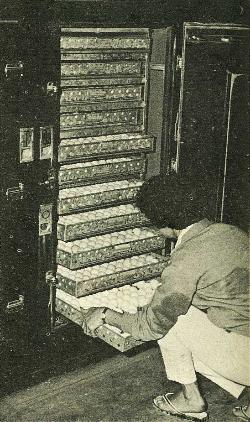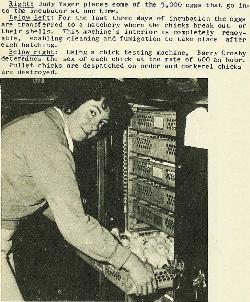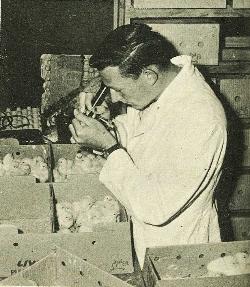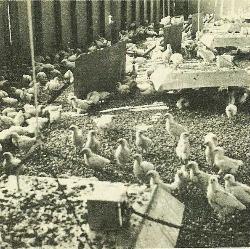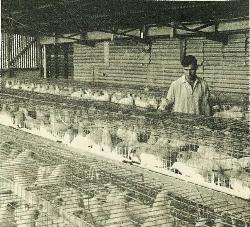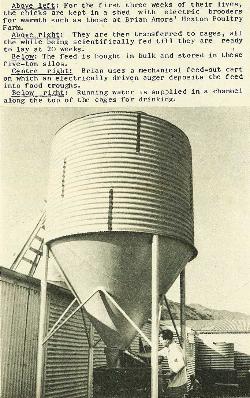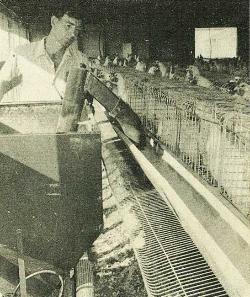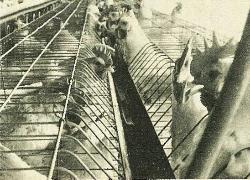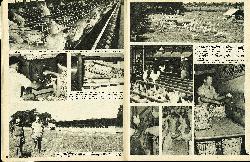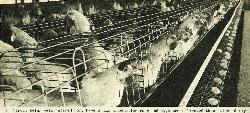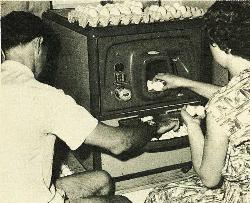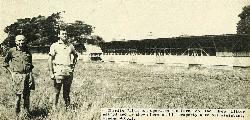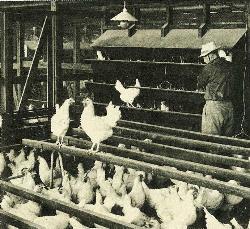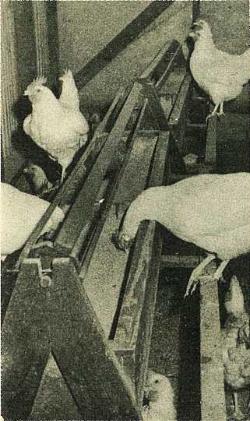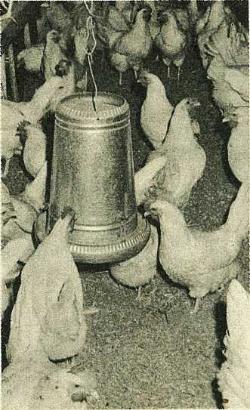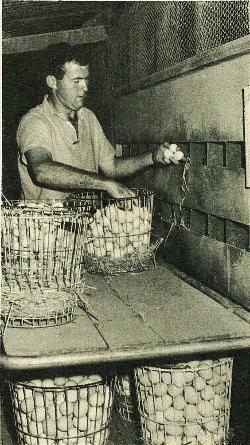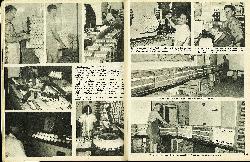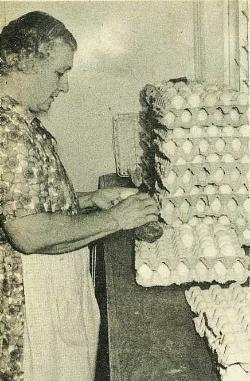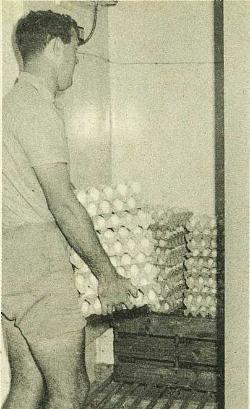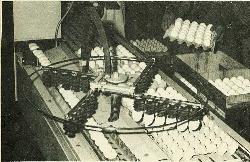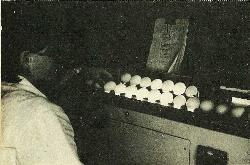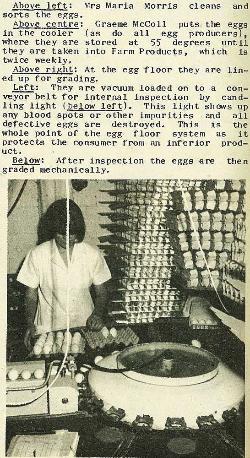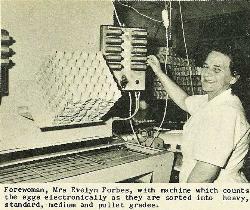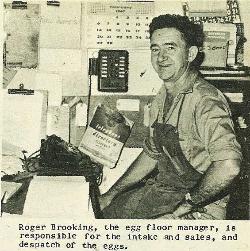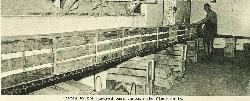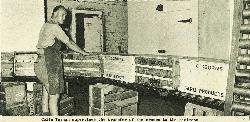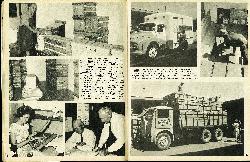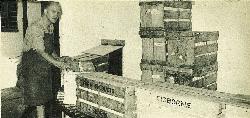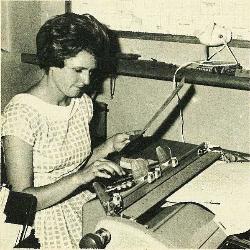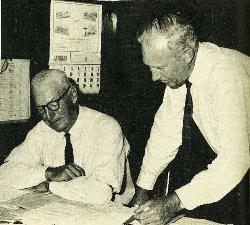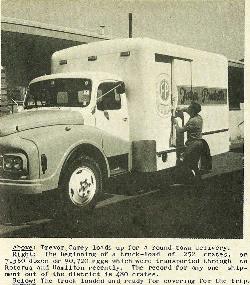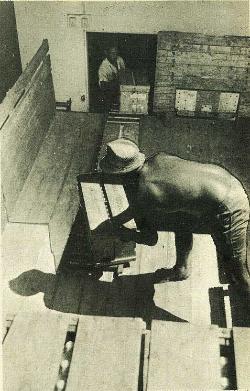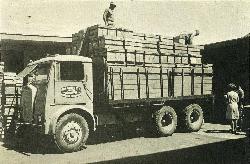20
Scrambled, Fried Or Boiled?
With the increase in the scientific rearing of poultry, particularly over recent years, egg production has become big business.
The high production of suitable grain in the Gisborne district makes the area ideal for poultry raising and egg production.
Both the deep litter system and the cage method are used.
The deep litter method keeps the birds in sheds where they lay in nests, whereas the cage birds' eggs roll out onto a collecting trough as soon as they are laid.
The question of which came first, the chicken or the egg, is still not solved so we'll start with the egg.
Bruce Yager of Bolton Hatcheries raises day-old chicks for sale to the poultry farmers of the district.
Operating under franchise, Bruce breeds his chicks from stock originally supplied by Tegel, one of the largest poultry concerns in Australasia.
By operating under this franchise, the hatchery has available to it all the services of Tegel's research facilities and benefits.
The size of the Tegel concern can be gauged by the fact that in 1964 150,000 birds were tested and evaluated for ability as egg producers, and their resistance to disease.
This number does not include, of course, the thousands of other hens reared as breeders.
At the Bolton Hatcheries the number of chicks raised by incubator rose to 90,000 this season.
Three different breeds are raised, but eggs not required for hatching are sold.
Chicks are hatched to order, and the period of incubation is three weeks.
Pullet chicks are despatched on order and cockerel chicks are destroyed.
Judy Yager places some of the 9,000 eggs that go into the incubator at one time.
For the last three days of incubation the eggs are transferred to a hatchery where the chicks break out of their shells. This machine's interior is completely removable, enabling cleaning and fumigation to take place after each hatching.
Using a chick testing machine, Barry Crosby determines the sex of each chick at the rate of 600 an hour.
21
For the first three weeks of their lives, the chicks are kept in a shed with electric brooders for warmth such as these at Brian Amors' Hexton Poultry Farm.
They are then transferred to cages, all the while being scientifically fed till they are ready to lay at 20 weeks.
The feed is bought in bulk and stored in these five-ton silos.
Brian uses a mechanical feed-out cart on which an electrically driven auger deposits the feed into food troughs.
Running water is supplied in a channel along the top of the cages for drinking.
22
The birds, being well catered for, have a high production rate and eggs are collected three times daily.
Brian and his wife Margaret work together at the egg cleaning machine (left). A sponge rubber conveyor belt covered with fine abrasive (above) surrounds and cleans the eggs at the rate of 2,000 an hour.
Charlie Wilkinson operates his farm on the deep litter method and is shown here on his property with his assistant, Graeme McColl.
23
On the Wilkinson farm the pullets are kept in a special paddock with shelters (above) until they are ready to lay, when they are then transferred to the laying shed, part of which is seen at left.
Two methods of feeding (below left) are used and running water again is used for drinking.
Graeme McColl (below) collects some of the 2,500 eggs which are produced every day.
24
Mrs Maria Morris cleans and sorts the eggs.
Graeme McColl puts the eggs in the cooler (as do all egg producers), where they are stored at 55 degrees until they are taken into Farm Products, which is twice weekly.
At the egg floor they are lined up for grading.
They are vacuum loaded on to a conveyor belt for internal inspection by candling light
This light shows up any blood spots or other impurities and all defective eggs are destroyed. This is the whole point of the egg floor system as it protects the consumer from an inferior product.
After inspection the eggs are then graded mechanically.
25
Forewoman, Mrs Evelyn Forbes, with machine which counts the eggs electronically as they are sorted into heavy, standard, medium and pullet grades.
Roger Brooking, the egg floor manager, is responsible for the intake and sales, and despatch of the eggs.
Crates by the hundred pass through the floor daily.
Colin Twyman supervises the transfer of the crates to the coolroom
26
The crates of eggs come through the hatch (above) into the cool room (left), where they are stored for short periods, still at 55 degrees, until delivery to the retailer.
In 1966 the intake of eggs at the floor amounted to 1,278,664 dozen. Local sales were 786,867 dozen, while 129,884 dozen were pulped and transfers amounted to 370,320 dozen.
The operation of district egg floors stabilises the supply of eggs throughout the country so that a surplus in one area will balance a deficit in another.
For example, Wellington is an almost non-productive area and most of the supply to the city comes from the transfer of surplus eggs from other districts.
27
Trevor Carey loads up for a round-town delivery.
The beginning of a truck-load of 252 crates, or 7,560 dozen or 90,720 eggs which were transported through to Rotorua and Hamilton recently. The record for any one shipment out of the district is 480 crates.
The truck loaded and ready for covering for the trip.



